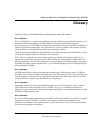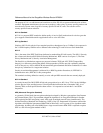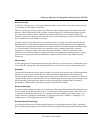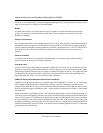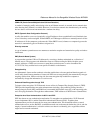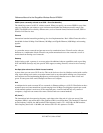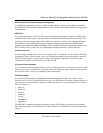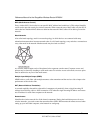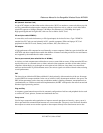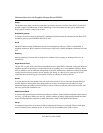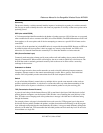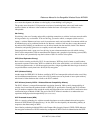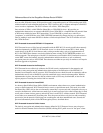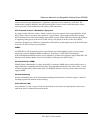
Reference Manual for the RangeMax Wireless Router WPN824
12 Glossary
202-10072-01, March 2005
TCP/IP
The underlying technology behind the Internet and communications between computers in a network. The
first part, TCP, is the transport part, which matches the size of the messages on either end and guarantees that
the correct message has been received. The IP part is the user's computer address on a network. Every
computer in a TCP/IP network has its own IP address that is either dynamically assigned at startup or
permanently assigned. All TCP/IP messages contain the address of the destination network as well as the
address of the destination station. This enables TCP/IP messages to be transmitted to multiple networks
(subnets) within an organization or worldwide.
TKIP
A security feature that is a WEP enhancement: Temporal Key Integrity Protocol and Message Integrity
Check (MIC) is a modification of WEP to defend against known attacks (WEP+ four patches for key
mixing, message integrity, rekeying, initialization vector protection)
USB (Universal Serial Bus)
A high-speed bidirectional serial connection between a PC and a peripheral that transmits data at the rate of
12 megabits per second. The new USB 2.0 specification provides a data rate of up to 480 Mbps, compared to
standard USB at only 12 Mbps. 1394, FireWire and iLink all provide a bandwidth of up to 400 Mbps.
VoIP (Voice over IP)
Voice transmission using Internet Protocol to create digital packets distributed over the Internet. VoIP can be
less expensive than voice transmission using standard analog packets over POTS (Plain Old Telephone
Service).
VPN (Virtual Private Network)
A type of technology designed to increase the security of information transferred over the Internet. VPN can
work with either wired or wireless networks, as well as with dial-up connections over POTS. VPN creates a
private encrypted tunnel from the end user's computer, through the local wireless network, through the
Internet, all the way to the corporate servers and database.
War Chalking
The act of making chalk marks on outdoor surfaces (walls, sidewalks, buildings, sign posts, trees) to indicate
the existence of an open wireless network connection, usually offering an Internet connection so that others
can benefit from the free wireless access. The open connections typically come from the access points of
wireless networks located within buildings to serve enterprises. The chalk symbols indicate the type of
access point that is available at that specific spot.
There are three basic designs that are currently used: a pair of back-to-back semicircles, which denotes an
open node; a closed circle, which denotes a closed node; a closed circle with a “W” inside, which denotes a
node equipped with WEP. Warchalkers also draw identifiers above the symbols to indicate the password that
can be used to access the node, which can easily be obtained with sniffer software.



